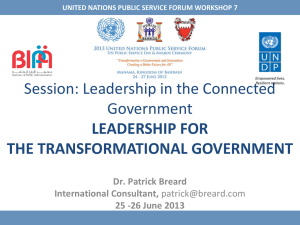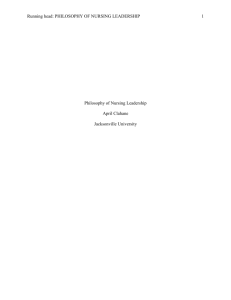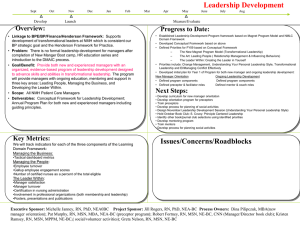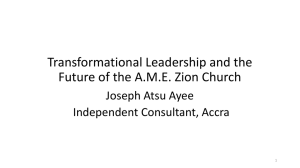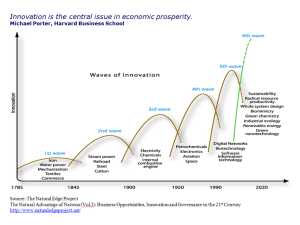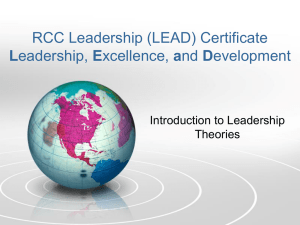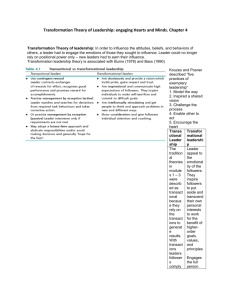Examples of Critical writing
advertisement
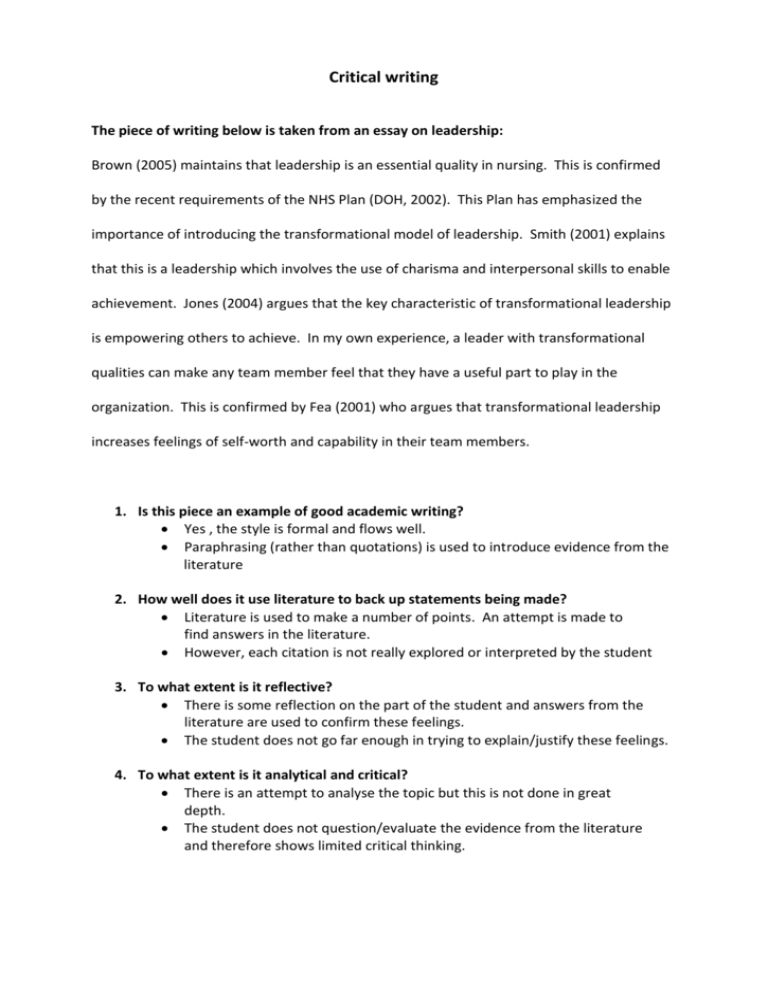
Critical writing The piece of writing below is taken from an essay on leadership: Brown (2005) maintains that leadership is an essential quality in nursing. This is confirmed by the recent requirements of the NHS Plan (DOH, 2002). This Plan has emphasized the importance of introducing the transformational model of leadership. Smith (2001) explains that this is a leadership which involves the use of charisma and interpersonal skills to enable achievement. Jones (2004) argues that the key characteristic of transformational leadership is empowering others to achieve. In my own experience, a leader with transformational qualities can make any team member feel that they have a useful part to play in the organization. This is confirmed by Fea (2001) who argues that transformational leadership increases feelings of self-worth and capability in their team members. 1. Is this piece an example of good academic writing? Yes , the style is formal and flows well. Paraphrasing (rather than quotations) is used to introduce evidence from the literature 2. How well does it use literature to back up statements being made? Literature is used to make a number of points. An attempt is made to find answers in the literature. However, each citation is not really explored or interpreted by the student 3. To what extent is it reflective? There is some reflection on the part of the student and answers from the literature are used to confirm these feelings. The student does not go far enough in trying to explain/justify these feelings. 4. To what extent is it analytical and critical? There is an attempt to analyse the topic but this is not done in great depth. The student does not question/evaluate the evidence from the literature and therefore shows limited critical thinking. Now read the following extract: A review of the available literature provides a wealth of examples of authors advocating leadership as an essential quality in nursing. For example, Shackleton (1950) emphasises that nursing needs strong leadership and recommends a strong transactional approach of reward and punishment to get results and promote teamwork. However, more recently, authors have moved towards the concept of charismatic and transformational leadership (Smith, 2001; Jones, 2004). These qualities are also an integral part of the new recommendations in the NHS Plan (DOH 2002). Charisma appears to be a complex phenomenon to define. Davidzhar (1991) suggests that it is an aspect of personality which makes the individual irresistible to others, in terms of their ability to persuade and empower others. However, other authors, such as Romano (1996) and Harvey (2000) highlight the intangible nature of charisma and emphasise the frustrating point that individuals know charisma if they see it, but find it difficult to define. It appears problematic, therefore, to identify exactly how charisma can become an integral part of developing transformational leadership in nursing, if it is a quality which, in itself, is difficult to define. For example, Smith (2001) maintains that transformational leadership uses a combination of charisma and interpersonal skills to enable achievement. However, identifying potential transformational leaders may be a difficulty if the pre-requisite for identifying charismatic individuals is an integral part of this selection process. Jones (2004) argues that the key ability of a transformational leader is the ability to empower others, while Fea (2001) maintains that their key strength is to increase feelings of self-worth and capability in their team members. On reflection, my own experience of transformational leadership appeared to be based principally on being persuaded, by the sheer force of personality of the individual, that I had the potential to contribute and achieve. It seemed to me that it was their apparent faith in me and their power of persuasion that enabled me to become an effective team member. This requirement for charisma in transformational leadership, therefore, may indeed be based on individual personality factors that enable others to feel good about themselves and their achievements. There is some evidence that this is the case. Jones (2003), for example, argues that transformational leaders are born and cannot be made. Regisara (2003) also maintains common key personality traits can be identified in effective transformational leaders, which have probably been present since childhood. It seems, therefore, that the key requirement of the NHS Plan (2002) for the training of transformational leaders is not as straightforward as they first envisioned, as the available literature suggests that these leaders are born, rather than made. How different is this piece of writing? The issue is explored in considerably more depth The student constantly tries to find answers in the literature, particularly finding different definitions and interpretations of the key issue. Once the literature is presented, the student puts their own “spin” (interpretation) on it Personal thoughts and reflections are always followed up by attempts to find supporting evidence (substantiation) in the literature The complexity of the issue is recognised. Things are not presented simplistically as “black and white”. Instead, shades of grey are acknowledged. The student’s “voice” is heard throughout, trying to make sense of what they have read and comparing it with what they have experienced.





